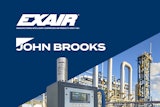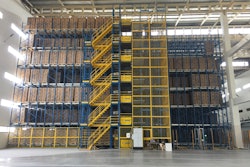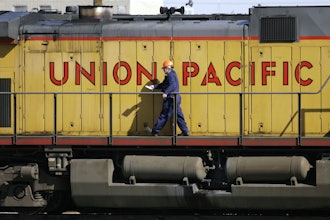Warehouse managers are experiencing more pressure than ever to control and cut costs in the warehouse and accurately fill orders to stay competitive. Booming e-commerce and consumer demand call for faster production, which creates more opportunities for hazards and costly inefficiencies. Increasing productivity and cutting unnecessary costs in the warehouse are a top priority. Here are five things you can do to address common inefficiencies in your warehouse and improve the workflow:
#1 — Conduct Continuous Training to Cut Costs in the Warehouse
Improper training and poor warehouse safety play large roles in worker injuries and deaths. Even after initial training, periodically meet with workers to share concerns and discuss ideas for improvements. Encourage workers to apply their own ideas to produce more meaningful and successful results in your efforts to cut costs in the warehouse. Genuine support and concern from management for the safety of workers is crucial for reducing accidents and maintaining morale.
As technology and humans become more intertwined, processes will need to change. This is why keeping workers safe is essential for efficient operations. Follow OSHA’s requirements and recommendations for warehouse safety, and apply feasible controls to set the expectation for safety in your facility. Ensure everyone understands their role in contributing to a safe and productive workplace.
#2 — Practice Lean Warehousing
Meet the ever-changing needs of your customers and optimize operations by implementing lean production tools to cut costs in the warehouse. Lean systems such as 5S and Kanban can make it easier to find products, navigate, and streamline processes so the right product gets to the right place at the right time. The focus on organization can also greatly improve overall safety by clearing up clutter to reduce hazards and opportunities for accidents.
Improve organization and efficiency by assessing how to make the most out of your space. A few things you can do is assess storage or empty spaces that could be used more effectively, scale racks vertically, make popular items easier to access, and color-code areas and tools. Encourage workers to watch for ways they can simplify processes. Eliminating wasteful or unnecessary steps will simplify the workflow and help get products into the hands of customers faster.
#3 — Implement Strategic Visuals
Visual communication is a key element in any lean warehouse system. Minimize waste and errors to cut costs in the warehouse by ensuring workers have important information where and when they need it, with clear and effective labels or signs. Customize your safety messages to make them unique to your business and processes. Utilize images, symbols, and other eye-catching graphics for simple and quick recognition.
Enhance organization, efficiency, and safety from all angles with a color-coded floor marking system. Use floor tapes to designate storage and inventory locations, cordon off hazardous areas, and even mark walls and pipes. Use large floor signs and printed tapes to enhance safety and boldly communicate important procedures, approaching hazards, and PPE reminders.
#4 — Incorporate a Warehouse Management System (WMS)
Understand where it makes sense to start automating processes, keeping aware of any new system’s compatibility with existing systems. If you have high-volume shipping operations, implementing an optimized warehouse management system (WMS) will save you a large amount of time and money as you look for ways to cut costs in the warehouse. The average retailer only has 63 percent inventory accuracy. A WMS provides better visibility of order picking, shipping, and inventory counts to streamline the movement of goods and parcel management. You’ll be able to get a more accurate picture to determine future product demand with a WMS in place.
#5 — Invest in high-quality safety labeling supplies
With constant foot and vehicle traffic, it’s important to use reliable safety labeling supplies that can handle all the day-to-day activities in the warehouse. Easily meet compliance requirements and keep your workers safe using industrial-strength materials. You’ll need everything from simple inventory and identification labels, to large multi-color wayfinding signs, pipe markers, and general purpose labeling.
Material like a flexible calendared vinyl with a permanent, pressure-sensitive adhesive is popular for industrial labeling applications and will allow you to get the most out of your signs and labels. By investing in a more durable supply, you’ll also cut costs in the warehouse by saving on frequent replacement costs for worn or damaged labels and signs.
Maintaining a safe and lean warehouse paves the way for efficient operations. Managers can get more information and tools to improve warehouse productivity by downloading a free guide to Warehouse Efficiency by Graphic Products. It breaks down major problems in the industry, offers key strategies for making lasting improvements, and includes useful checklists for spotting and fixing issues that are common in storage and shipping facilities to empower you to successfully cut costs in the warehouse.
A version of this story first appeared on the Cerasis blog.
Main image: A warehouse worker operates an electronic lift to place boxes and goods in their allocated zones at the warehouse. (AP Photo/Alastair Grant)























